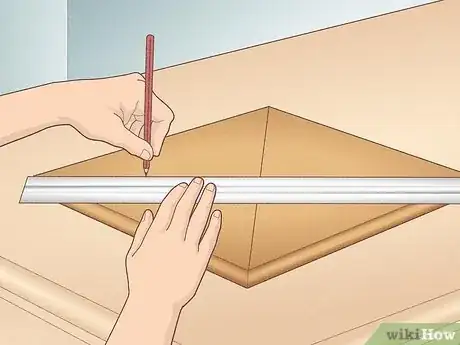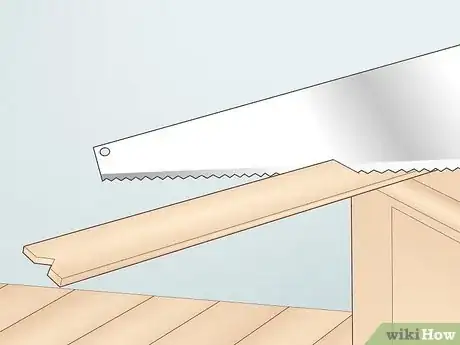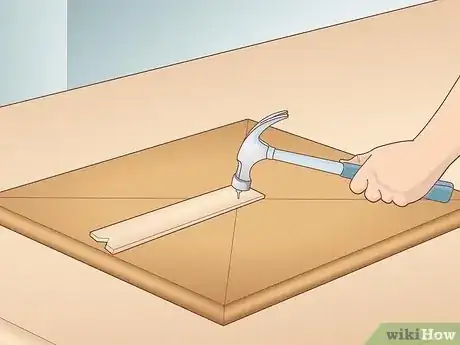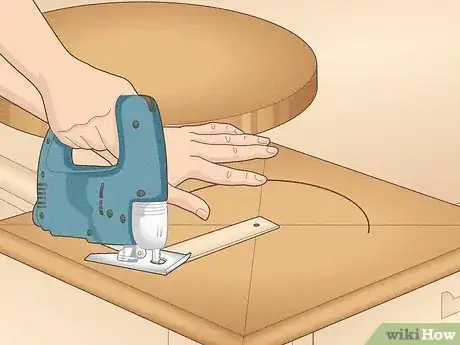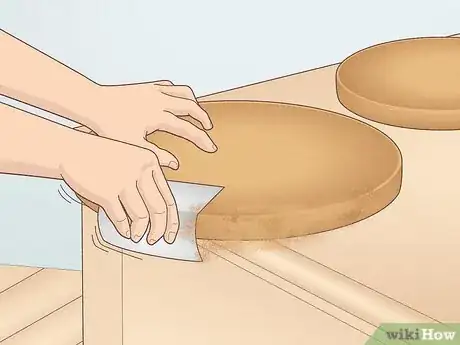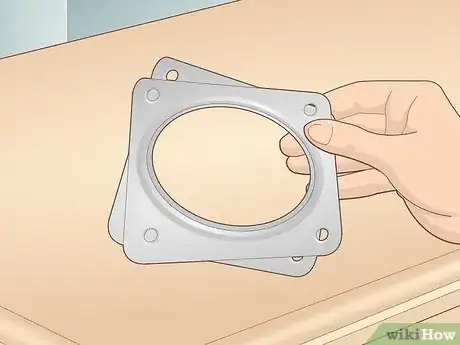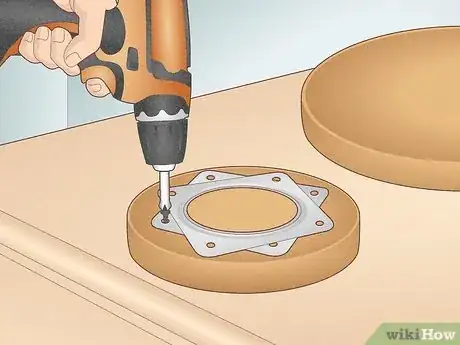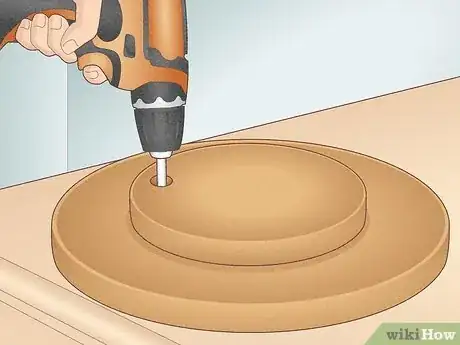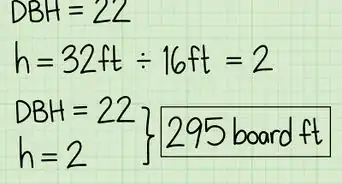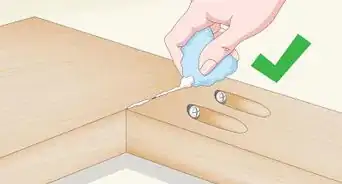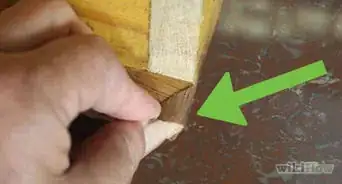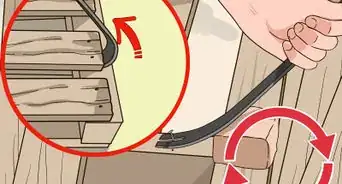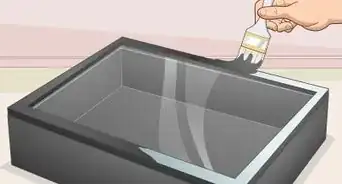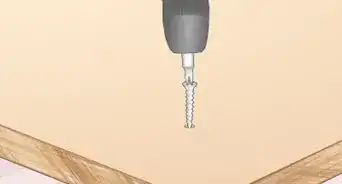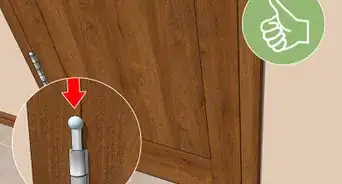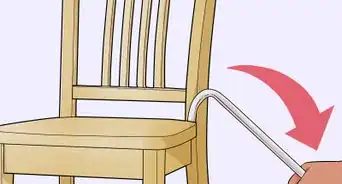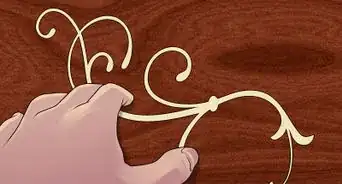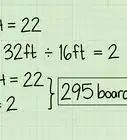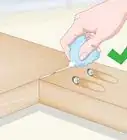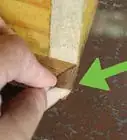This article was co-authored by wikiHow staff writer, Eric McClure. Eric McClure is an editing fellow at wikiHow where he has been editing, researching, and creating content since 2019. A former educator and poet, his work has appeared in Carcinogenic Poetry, Shot Glass Journal, Prairie Margins, and The Rusty Nail. His digital chapbook, The Internet, was also published in TL;DR Magazine. He was the winner of the Paul Carroll award for outstanding achievement in creative writing in 2014, and he was a featured reader at the Poetry Foundation’s Open Door Reading Series in 2015. Eric holds a BA in English from the University of Illinois at Chicago, and an MEd in secondary education from DePaul University.
There are 11 references cited in this article, which can be found at the bottom of the page.
This article has been viewed 14,180 times.
Learn more...
Looking to solve your storage needs in the kitchen? Want to wow guests with a custom Lazy Susan at your next dinner party? Building a Lazy Susan is easier than it may seem. A DIY Lazy Susan also happens to be a great introductory woodworking project, since it requires you to make round cuts with a straight blade, but there aren’t too many moving parts. In this article, we’ll walk you through everything you need to do to make a Lazy Susan. We have a list of the hardware you'll need to make a Lazy Susan here.
Steps
Setting up Your Jig
-
1Measure the dimensions inside the cabinet where the Lazy Susan will go. Grab a measuring tape and open the cabinet or pantry where you plan on putting the Lazy Susan. Measure the dimensions of the space and jot them down. This way, you won’t accidentally build a tabletop platform that’s too big to sit comfortably where you need it to go.[1]
- If you are going to display the Lazy Susan (i.e. on a kitchen table or counter), measure the dimensions of that surface instead.
- There is no “correct” size for a Lazy Susan. So long as it suits your need and fits where you want to store it, it’ll work just fine.
- Get a rough estimate for the diameter of the Lazy Susan using your measuring tape.
-
2Purchase 2 square-shaped boards in the wood of your choice. The boards must be at least 1 inch (2.5 cm) thick, and square. Many people opt for MDF or plywood because it’s cheap and easy to work with, but you can choose a higher-quality wood, like ash or cherry, if you really want the Lazy Susan to stand out.[2]
- You can truncate this process and speed things up by simply buying pre-cut circular boards.
- You can also cut boards into a square using a circular saw or jigsaw if you have a small woodworking shop and you have wood lying around.
- Most Lazy Susans that sit inside of a cabinet are 12–20 inches (30–51 cm) in diameter. It depends on the size of the cabinet, though. There are no universal Lazy Susan blueprints.
- Make sure that your boards are slightly wider than the diameter you’re imagining for your Lazy Susan. If your cabinet is 18 inches (46 cm) deep and wide, you might get boards that are 20 by 20 inches (51 by 51 cm).
Advertisement -
3Draw diagonally from corner to corner to find the center of the boards. Take a straight edge and line it up with two opposite corners of the first board. Draw a straight line with a pencil along the edge. Repeat this process on the remaining corners. The intersection where these two lines meet is the center. Mark this location with a small dot.[3]
- The side you just drew on will be the underside of the top platform.
- The center is important because your two boards will need to meet at the center if your Lazy Susan is going to spin freely without wobble.
-
4Cut a scrap wood strip longer than the radius and cut a groove. Grab a cheap, thin strip of wood and cut it to match the radius of the Lazy Susan, plus 2–3 in (5.1–7.6 cm) or so. Snap or cut the wood strip using a saw.[4] Then, cut a small groove in the strip where the radius ends to hold the blade of your jigsaw and guide it along the line you’re going to cut.
- This is going to be a key part of your jig—an easy-to-make device that makes it easy to cut perfect circles with a straight-blade saw.
- You do not need to be “scientific” when it comes to the measurements. So long as the strip is longer than the radius of your Lazy Susan and the groove you cut matches the radius, it’ll work.
-
5Nail the center of the strip to the center of the board. This is why you left an extra 2–3 in (5.1–7.6 cm) on your strip—to nail it into the board. Line the strip up on your board and use a small nail and a hammer or mallet to nail it into the center. Drive the nail deep enough that it won’t pop out while you’re rotating it, but not so deep that you go all the way through the board.[5]
- If you do accidentally drive the nail all the way through the board, don’t throw it out! You can patch the hole when you’re done, and the hole should still work for your jig.
- Rotate the strip around your board. Notice how the nail anchors it in place? This is your jig! You can now use the end of the strip as a guide for your saw.
Cutting and Sanding Your Boards
-
1Use a jigsaw and the end of the jig to cut a perfect circle out of your wood board. Set your board atop two sawhorses or a workbench. Put on protective eyewear and slide the blade in through the groove you cut on the wood strip. Put your nondominant hand in the middle of the strip and grip the saw with your dominant hand. Pull the trigger and slowly guide the saw around the board to cut out a perfect circle.[6]
- Use machine screws to attach the guide to the jigsaw (this is what the screw slots are for).
- You can also free-hand your cut if you aren’t worried about your circle being perfectly round.
- You can also use a plunge or trim router if you prefer.[7] If you have a really small circular saw, you could probably get away with using that as well.
- If you have a router, you can buy a special circle-cutting jig like this one from Milescraft to easily cut circles.
-
2Repeat this process on the second board using a shorter radius. Remove the jig from your board and repeat this entire process using a radius that’s at least half the size of your larger board, but no bigger than 1 in (2.5 cm) shorter. Draw lines across opposing edges to find the center, trim your jig to make it smaller, and use your jigsaw to cut out the base of your Lazy Susan.[8]
- The bigger you make the base of your platform, the more stable the Lazy Susan will be. However, the more noticeable the base is, the less “aesthetically pleasing” your Lazy Susan will be.
-
3Sand your edges to give them a cleaner, smoother texture. You can do this a few different ways. You can sand the Lazy Susan by hand for a more rustic, textured look, or use a belt sander to cleanly and quickly smooth the edge out. Aim to round off the edges of each board to avoid scratching yourself when you use it.[9]
- For the best possible finish, do this multiple times using increasingly finer sandpaper. You might start with 200-grit sandpaper, then move to 600-grit, and finish with 1600-grit sandpaper.
- If you’re using MDF or plywood, heat-activated wood edging (or iron edging) can give the edges a more professional look. It’s generally pretty hard to sand these materials without chipping them.
Assembling the Turntable Bracket
-
1Purchase a square turntable bracket designed for Lazy Susans. These are unique brackets designed specifically for this. The turntable bracket looks like two square-shaped metal pieces that rotate on top of one another. Purchase a 3–6 in (7.6–15.2 cm) turntable bracket based on the size of your Lazy Susan.[10]
- These brackets (also known as bearings) can be kind of tough to find in a big box construction supply store. This bracket from DSMTECH is perfect, although any similar bracket will work.
- There is one alternative here. There’s a circular bracket out there with rubber on it. You can use this if you want to take the Lazy Susan apart in the future—just put one panel on top of the other and you’re done! It won’t be nearly as stable, though.
-
2Punch pilot/reference holes for the bracket into the underside of the larger board. Flip the larger board over (side with the pencil marks up) and set the bracket in the center of the board. Turn the two halves of the bracket away from one another to make an 8-point star.[11] Then, use a nail or pilot bit to punch small indentions where the holes on the bracket with one set of holes on it are located.
- This might be a little confusing at first, so take your time and try to imagine how this works. The part of the bracket with one set of holes will go on the underside of the larger platform, while the bracket with two sets of holes will go on the smaller platform.
-
3Drill access points for the bracket through the smaller board. Take your smaller platform and set the side up with pencil markings on it. Place the bracket on this platform the exact same way you did on it the top. Use the same set of holes and pilot bit to screw all the way through the smaller board. Then, set the bracket aside and open those holes up using a larger pilot bit or a plunge router.[12]
- Still a little lost here? Hold the smaller platform on top of the reference points you drove and rotate the smaller platform until you can see each of those points. That’s how you’ll drill the top side into the bracket.
- The size of the holes doesn’t matter so long as you have enough room to see what you’re doing on the other side when the two boards are stacked together.
-
4Screw the turntable bracket into the center of the smaller board. Hold the bracket over the center of the board, with the bracket at an angle that does not overlap or touch the access points you drilled. Use a drill to drive wood screws into the holes on the side of the bracket with two holes on it to secure it in place.[13]
- You can use either set of holes on the bracket depending on the size of your screws.
- The screws you use depend on the thickness of the board. For 1 in (2.5 cm) thick boards, use 1⁄2 in (1.3 cm) wood screws.
-
5Drive screws through the access points to secure the bracket to the top. This one can take a little patience and time, since it can be a little tricky. Place the underside of the top board up and turn the base upside down so the bracket is pointing down. Orient the spinning bracket so it lines up with the access points and place them over the pilot holes. Use wood screws to secure the top board to the bracket.[14]
- Your Lazy Susan should now work! Give it a spin to see how it feels. If it’s a little wobbly, make sure all of your screws are tight and secure.
-
6Place rubber pads, rubber strips, or furniture pads on the bottom. There are a few ways to do this, but the goal is to put something on the bottom of the Lazy Susan to hold it in place while it spins and protect the surface it’s sitting on. You can use adhesive rubber strips, or double-sided tape to attach rubber pads. Furniture pads will also work if you’re storing anything with weight on top of the Lazy Susan.
- These non-slip furniture pads from X-Protector are perfect for the job.
- You can stain or paint the Lazy Susan if you’d like to give it some texture, color, or personality!
Things You’ll Need
- Wood boards
- Wood strip
- Pencil
- Straight edge
- Nail
- Hammer or mallet
- Jigsaw, plunge router, or trim router
- Sawhorses or work table
- Square bearing bracket
- Wood screws
- Pilot bit
- Drill
- Rubber pads or strips
- Stain or paint (optional)
References
- ↑ https://www.homenish.com/lazy-susan-cabinet-sizes/
- ↑ https://www.youtube.com/watch?v=qs7CRsG024Q&t=147s
- ↑ https://www.youtube.com/watch?v=qs7CRsG024Q&t=172s
- ↑ https://www.youtube.com/watch?v=qs7CRsG024Q&t=185s
- ↑ https://www.youtube.com/watch?v=qs7CRsG024Q&t=185s
- ↑ https://www.rockler.com/learn/six-circle-cutting-techniques
- ↑ https://www.youtube.com/watch?v=qs7CRsG024Q&t=207s
- ↑ https://www.youtube.com/watch?v=qs7CRsG024Q&t=25s
- ↑ https://www.highlandwoodworking.com/woodnews/2008july/lazysusan.html
- ↑ https://www.highlandwoodworking.com/woodnews/2008july/lazysusan.html
- ↑ https://dreamdesigndiy.com/lazy-susan-lazy-painter/
- ↑ https://www.youtube.com/watch?v=qs7CRsG024Q&t=454s
- ↑ https://www.highlandwoodworking.com/woodnews/2008july/lazysusan.html
- ↑ https://www.highlandwoodworking.com/woodnews/2008july/lazysusan.html
- ↑ https://www.chicagotribune.com/news/ct-xpm-1996-06-09-9606090211-story.html


